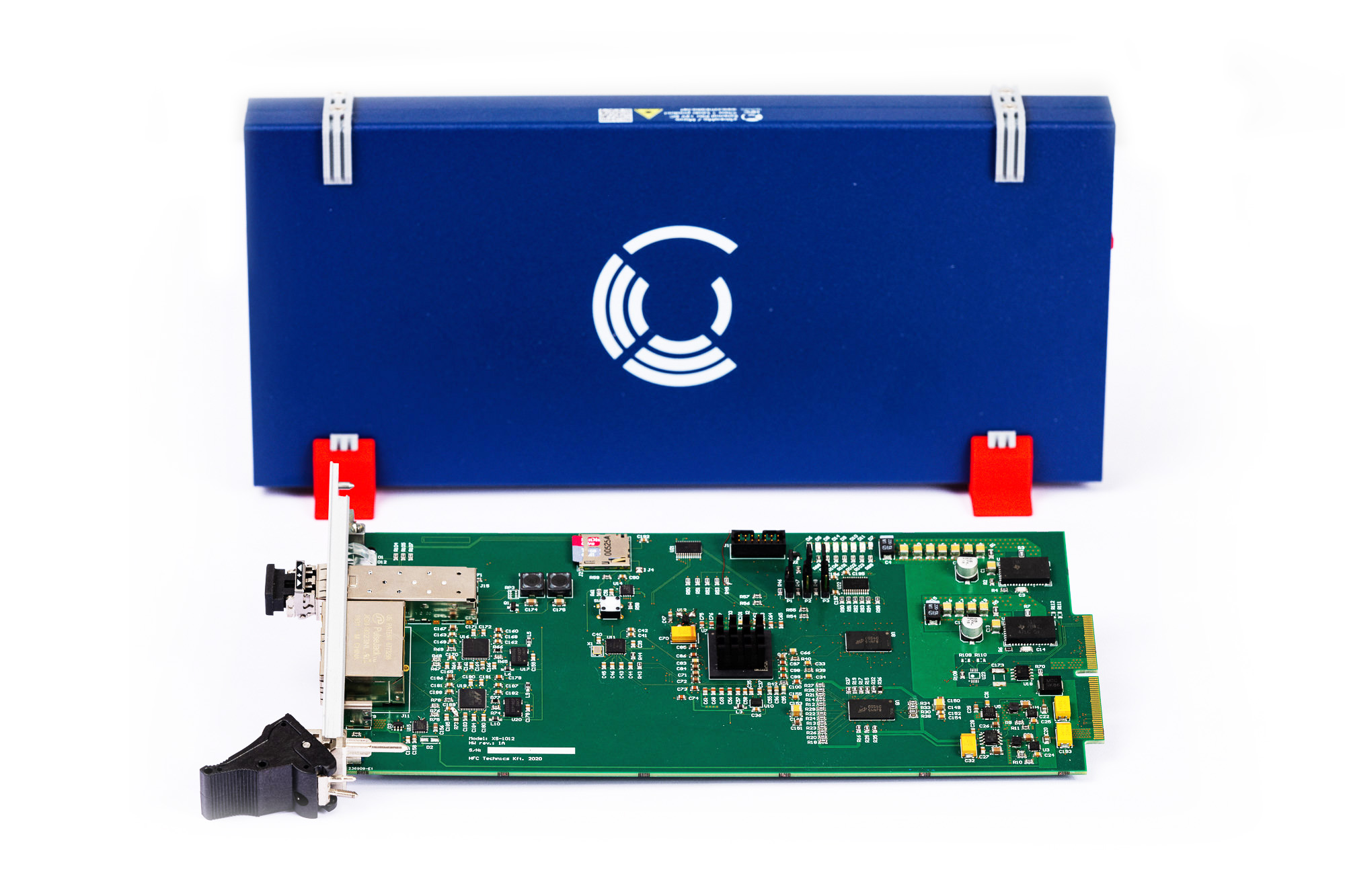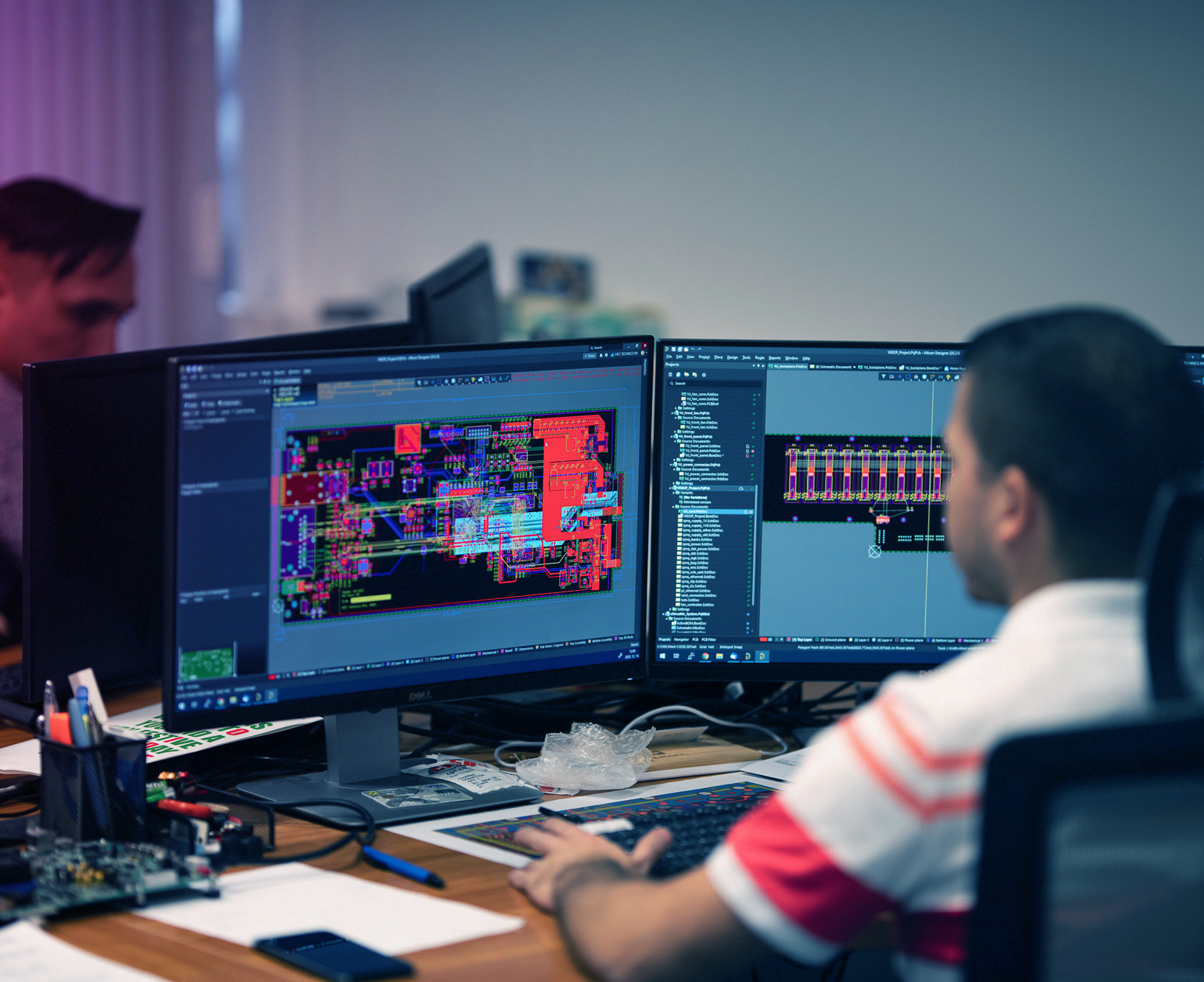
xStreaMo
IP streamering platform

xStreaMo IP streamer platform
During the designing process of the xStreaMo platform, we aimed to implement a universal hardware device based on an ultra modern FPGA-based electronic hardware, which can be integrated into a customizable frame. Through the electronic designing, we considered the extraordinary development of IP technology, thus the potential of rapid adaptation to the market needs.
As the base of the platform framework, we applied the ”eurocard” electronic card size, which can be considered as industry standards, in addition to the 19” rack mechanism subrack structure, the simple desktop design can be used.
We have developed three mechanical versions for the installation of the electronic card; the smallest desktop or portable „Micro”, the already modular, 1-2 and the third one is in which 3-4 electronic card is suitable for installation, it can be used with any desktop or 19” 1 U installation „Mini” and a 4 RU subrack „Modular” design for 16 electronic cards.
High availability is an essential design element in all versions, so redundant power supply and fan for cooling are available in all versions.
Naturally, we also set the goal of creating automatic redundancy of streaming functions, however this will only be availalbe in the „Modular” version and in a subsequent software version.

Hardware Streamer according to the most modern principles
Hardware design is a new industry in the history of our company. While this means that we do not have many years of experience with similar tasks, it also means that we have been able to use state-of-art systems and softwares to the design, as being a new sector, all assets were acquired during development. Using these tools, we were able to create 3D models and simulations of almost every component before they were put into production. Of course, this does not mean that everything was flawless in the preparation of the first samples, but it significantly reduced the iterations of the production/correction of the prototypes.
Due to the complexity and high-speed operation of the system, we had to face obstacles during the designing process that we could not encounter when making a simple printed circuit board. Such were for example the interference-free and impedance-matched wiring of the multi-gigabit internal interfaces, given that the finished printed circuit board contains 8 conductive layer. With such complexity, accurate impedance matching could have been done at the cost of lots of calculations, but the 3D field solver integrated into selected design software provided all the parameters to assure adequate support for the application of the necessary design directives.
We used Altium Designer 19/20 software to design an simulate electronic hardware, and AutoDesk Fusion 360 provided assistance in designing mechanical systems.


